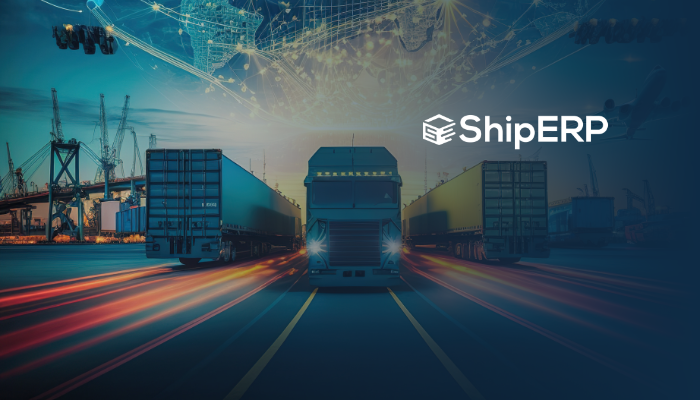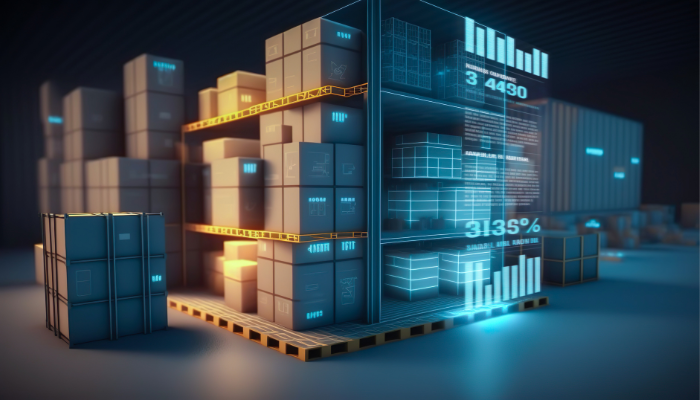
10 Ways Automation and AI can Enhance Transportation Management
In today’s fast-paced business environment, efficient supply chain operations are crucial for maintaining a competitive edge. Among the key components of a robust supply chain, transportation management plays a pivotal role in ensuring the smooth movement of goods from point A to point B. However, traditional methods of transportation management are often manual, time-consuming, and prone to human error. To overcome these challenges and unlock new opportunities, adopting new solutions that leverage automation and artificial intelligence (AI) is the way forward. We’ll explore the benefits of embracing automation and AI in transportation management and how they can revolutionize your supply chain operations.
1. Enhance Visibility and Tracking
In the age of e-commerce and global supply chains, visibility into the movement of goods is paramount. Traditional manual tracking methods often fall short in providing accurate, real-time updates on the location and condition of shipments. Automation and AI-powered solutions offer advanced tracking capabilities, leveraging technologies such:
- Global Positioning System (GPS)
- Sensors
- Data Analytics
This can offer end-to-end visibility throughout the transportation process, empowering you to proactively address any issues, mitigate risks, and provide accurate delivery estimates.
2. Streamlining Operations with Intelligent Routing
Transportation management involves complex decisions regarding route optimization, carrier selection, and load planning. By harnessing the power of AI algorithms, a sophisticated software solution can analyze the vast amounts of data to generate optimized routes, including:
- Historical transportation data
- Weather conditions
- Traffic patters
- Real-time information
Intelligent routing not only minimizes travel time and fuel costs, but also helps avoid congestion, delays, and potential risks. With automated route planning, your enterprise can achieve greater operational efficiency, reduce transportation costs, and improve overall customer satisfaction.

3. Optimize Inventory Management
Effective transportation management is closely tied to efficiency inventory management. By integrating an AI-powered transportation management system with your inventory management system, you can achieve better synchronization between transportation and inventory levels.
The software solution can leverage and analyze demand patterns, historical data, and customer preferences to forecast inventory needs accurately. Amazon has this down to a science, but you too can enhance your transportation management system to optimize inventory levels, reduce stockouts, and avoid excess inventory.
Moreover, a streamlined inventory management solution can help you:
- Reduce holding costs
- Improve order fulfillment rates
- Enhance overall supply chain performance
4. Predictive Maintenance
Transportation fleets often face unexpected breakdowns or maintenance issues, resulting in delays and disruptions. AI algorithms can analyze real0time and historical data from vehicles, such as engine performance, mileage, and maintenance records to predict potential maintenance needs.
By proactively scheduling maintenance and repairs, organizations can reduce unplanned downtime, optimize fleet utilization, and ensure timely deliveries.
5. Proactive Risk Management
Like transportation fleets, transportation operations are susceptible to various risks, including disruptions. They’re also vulnerable to:
- Weather events
- Accidents
- Supplier delays
- Unexpected demand fluctuations
By adopting an AI-driven transportation management solution, you can proactively identify and mitigate potential risks. Some solutions can (again) analyze historical data, external factors, and real-time metrics to anticipate disruptions, evaluate alternative routes, and ultimately make informed decisions!
While some things are unavoidable (think: when the Suez Canal was blocked by the container ship, Ever Given) proactive risk management can help minimize the impact of everyday supply chain disruptions, ensures business continuity, and safeguards customer satisfaction.
6. Data-Driven Decision Making
Automation and AI-driven transportation management solutions generate a wealth of data from various sources, and these solutions can employ advanced analytics and machine learning algorithms to transform this raw data into actionable insights!
By harnessing this powerful data, you can make data-driven decisions to optimize transportation operations, identify areas for improvement, and drive continuous process enhancements. It can also enable you to improve resource allocation, reduce inefficiencies, and adapt quickly to changing market dynamics.

7. Dynamic Pricing and Rate Quoting
Leveraging AI algorithms, automated transportation management systems can dynamically adjust pricing and optimize rates based on factors such as:
- Demand
- Capacity
- Fuel costs
- Market conditions
By continuously monitoring and analyzing these variables, organizations can maximize revenue opportunities, improve overall profitability, and maintain competitiveness in present and future pricing landscapes.
8. Driver Performance Management
AI-powered transportation management systems can monitor driver behavior and performance through various sensors and telematic devices installed in vehicles. By collecting data on factors like speeding, harsh braking, or even excessive idling, companies can identify areas for improvement, provide targeted training programs, and incentivize safe and efficient driving practices. Not only can this enhance driver performance, but it also improves fuel efficiency, reduces accidents, and lowers insurance costs.
9. Load Optimization and Consolidation
Efficient load planning is crucial to maximize capacity utilization and minimize transportation costs. AI algorithms can analyze shipment characteristics (e.g., weight, volume and delivery requirements) along with real-time data to optimize load consolidation.
By grouping compatible shipments and identifying opportunities for backhauls or multi-stop routes, organizations can reduce empty miles, improve fuel efficiency, and achieve significant cost savings!
10. Regulatory Compliance and Documentation
Transportation operations must often comply with various regulatory requirements, such as customs documentation, safety standards, and environmental regulations. An automated transportation management system and help streamline all facets of the compliance process, including:
- HAZMAT label creation and printing
- Customs clearance documentation
- Monitoring and automatically adjusting to regulation changes
Ultimately, when you reduce (or altogether eliminate) manual paperwork while also ensuring accurate and timely compliance, you can avoid penalties, improve efficiency, and enhance regulatory risk management.
Summary: 10 Ways Automation and AI can Enhance Transportation Management
By leveraging automation and AI in transportation management, businesses can revolutionize their supply chain operations, achieve greater efficiency, and unlock new opportunities for growth! From Enhanced Visibility and Tracking to Regulatory Compliance and Documentation, these technologies empower an intelligent enterprise to make informed decisions, enhanced customer satisfaction, and drive competitive advantage in the ever-evolving logistics landscape. Whether you're running a small business or operating at scale, if you ship product, integrating AI with your transportation management system can (and will) increase visibility, reduce costs and labor, and significantly boost productivity and ROI across your entire enterprise.
If you're interested in scaling your operations to a global level, read our expert guide, Global Transportation System 101! For even more information about artificial intelligence and supply chain automation, check out the resources below.




